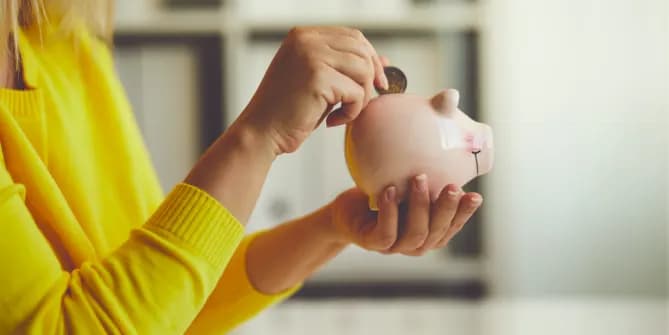Here’s How Much You Really Need in Your Emergency Fund
Saving for a rainy day can feel impossible whether you live paycheck to paycheck or have a stable income but a lot of “necessary” expenses each month. If you’re stressed about money, you aren’t alone.
A 2017 GOBankingRates survey found that more than half of all Americans have less than $1,000 in savings — and 39 percent have nothing saved at all. The number of millennials who are falling behind on saving is increasing, and many aren’t prepared for the unexpected: According to the Charles Schwab Modern Wealth Index, only 30 percent of millennials have an emergency fund that could cover living expenses for three months.
If you haven’t mastered your savings strategy yet, don’t worry — it’s never too late to start. An emergency fund to cover unexpected expenses is the first savings account you should build. Here’s what you need to know.
You Need Enough to Cover Three Months of Necessary Expenses
When it comes to your emergency fund, something is always better than nothing, but finance experts say that three months of expenses is the bare minimum for most people. Your personal situation should determine how much you should save and how quickly to build your fund — there’s no one-size-fits-all approach.
When you calculate a three-month total, think about required living expenses. You probably don’t need to overhaul your entire wardrobe or stream the latest episodes of your favorite TV show if you are out of work and need to make ends meet — but you will need to pay your rent or mortgage, feed yourself and your family, put gas in your car, and continue to cover fixed expenses like student and auto loans.
...But You Should Plan for More
Experts suggest that the more you make, the more you should put away. The same applies if you have a family to support, a single stable income to count on between you and a partner, or high fixed expenses.
Eric Black, a financial coach and owner of Financial Freedom Mentors, recommends his clients have a minimum of six months in their emergency funds so they don’t feel so much pressure to resolve their situation in three months or less. Some experts even say an emergency fund should be able to cover a year or more of unemployment — for high earners with specialized skills, it can take longer to find a new, well-paying job. For those who work freelance or in volatile industries, the job market is even more unpredictable.
An Emergency Fund Isn’t Just for Job Loss
Your emergency fund can certainly be used to keep a roof over your head and food on the table if you lose your job, but it’s also there to cover large, unexpected expenses like major car repairs, a family event that pulls you out of work for an extended period, or emergency medical treatment. You can use these savings to pay big bills instead of racking up high-interest credit on items that are outside of your regular budget.
Create a Separate Account
When it comes to savings, out of sight and out of mind means less chance you’ll use the cash for non-emergency purposes. Open a separate account dedicated to this fund. A high-yield savings or money market account is a good bet — both have slightly higher returns than a normal savings account and can still be liquidated quickly if you need the money. This account should not also be used for “fun” savings like vacations or a wedding.
Dial in Your Budget
Learning how to work savings into your budget can feel overwhelming, especially if you already live paycheck to paycheck. However, you don’t have to put away hundreds of dollars every week to build your emergency fund or meet other savings goals — a few dollars here and there, and some smart cuts to your discretionary spending, will do the trick.
“Go Kon-Mari on your spending,” says Lauren Zangardi Haynes, who works at Spark Financial Advisors. “Any extra cash you find, even if it's only $20 bucks a month, should be automatically transferred to your savings account with each paycheck.”
Set up an automatic transfer from your paycheck to your savings account or use an app like Digit to save passively. Identify one or two regular monthly expenses you can cut; try a no-spend week or month in which you spend only on absolute necessities; find a side hustle to bring in extra income — TaskRabbit, Airbnb, or freelance writing, for example; and deposit your entire tax refund into your emergency savings account.
Pay It Back
Don’t forget: If you dip into your emergency fund for any reason, you must pay it back. While ideally you’ll never have to use these savings, it isn’t a one-time commitment you can finish and forget about. If your financial situation changes and your living expenses increase, consider restarting automatic transfers until the fund is sufficient for your lifestyle. And, if you are able, save a little bit more upfront to account for increases in cost of living.
Do The Best You Can
It all comes back to your personal situation, says Emily Stanley, a finance expert at Business.org. If you can only save a small amount to start, do what you can. If you have significant debt to pay down, it’s OK to set aside a $1,000 cushion in your emergency fund and then focus on your other priorities, she adds.
Why women love us:
- Daily articles on career topics
- Jobs at companies dedicated to hiring more women
- Advice and support from an authentic community
- Events that help you level up in your career
- Free membership, always
